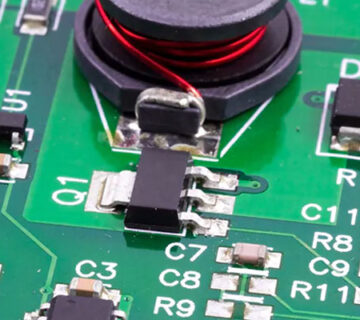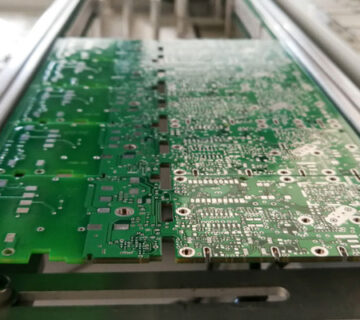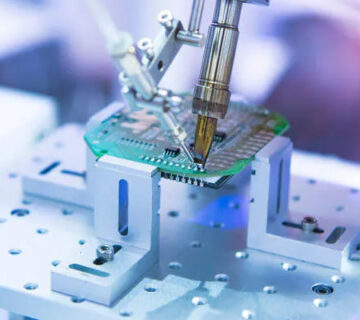Printed Circuit Boards (PCBs) are self-contained modules of interconnected electronic components found in a variety of electronic devices. The circuits are formed by a thin layer of conducting material deposited or printed on the surface of an insulating board that is called the substrate; after which a number of tiny electronic components are placed on the surface and soldered to the interconnecting circuits. PCBs could be single-sided, double-sided, or multi-layered. Clearly as the names suggest, single-sided boards have components on one side of the substrate; double-sided boards have components on both sides of the substrate; and multi-layered boards have a substrate made up of layers of printed circuits separated by layers of insulation. With these basics known, now let us get into the details of how a Printed Circuit Board is manufactured.
- First of all, the environment in which the PCB is to be manufactured should be cleaned thoroughly such that there is no contamination of any kind, and the air and components can be kept safe.
- Next, the substrate is prepared by unwinding woven glass fiber from a roll and feeding it through a process station, where it is impregnated with epoxy resin. This is then passed through rollers that roll the material to the desired thickness, while removing excess amounts of resin. This substrate is then passed through an oven to be semi-cured, after which is cut into large panels. These panels are stacked in layers, with alternating layers of adhesive-backed copper foil inserted in between, which are then placed in a press that subjects them to high temperatures and pressures for hours together to fully cure the resin and make a tight bond.
- Once the substrates are manufactured, several panels are stacked and pinned together to keep them from moving. They are then placed in a CNC machine where holes are drilled, and then de-burred to remove any excess material clinging to the edges of the holes. These holes are then plated with copper.
- Next, a printed circuit pattern is created on the substrate. For this, the surface is degreased, after which the panels pass through a vacuum chamber, where a positive photoresist material is pressed firmly onto the surface. After this, the printed circuit pattern mask is laid on top of the photoresist, and the panels are exposed to intense UV light. The mask is then removed and the surface of the panels is sprayed with alkaline developer, and then electroplated with copper. Next, another protective coating is placed on top to prevent the copper from oxidizing. The photoresist is then stripped off and the boards are sprayed with an acid solution.
- Contact fingers are then attached to the edge of the substrate to connect with the printed circuit, but they are masked off from the rest of the board and then plated with tin-lead, nickel, and gold. To prevent oxidization, the panels are passed through a reflow oven or hot oil bath that causes the tin-lead to melt into a shiny surface. Each panel is then sealed with epoxy and the panels are cut into individual boards.
- Finally, all the tiny electronic components are placed on the board with the help of several machines. With the surface mount technology, the board passes through an automatic solder paster, which places solder paste at each component contact point. Then, the components are placed where they need to be with the help of a chip shooter or robotic placer, or may be placed manually if they are big enough. All these components are then soldered to the circuits. Finally, all the residue is cleaned with water or solvents, as appropriate, to make the PCB ready to use.
Miracle Electronics is a leading manufacturer of the finest quality PCB assembly from Germany that provides end-to-end turnkey solutions using not only surface mount technologies, but also plated-through-holes technologies if required. All the procedures are standardized, making all the products of the highest quality!




